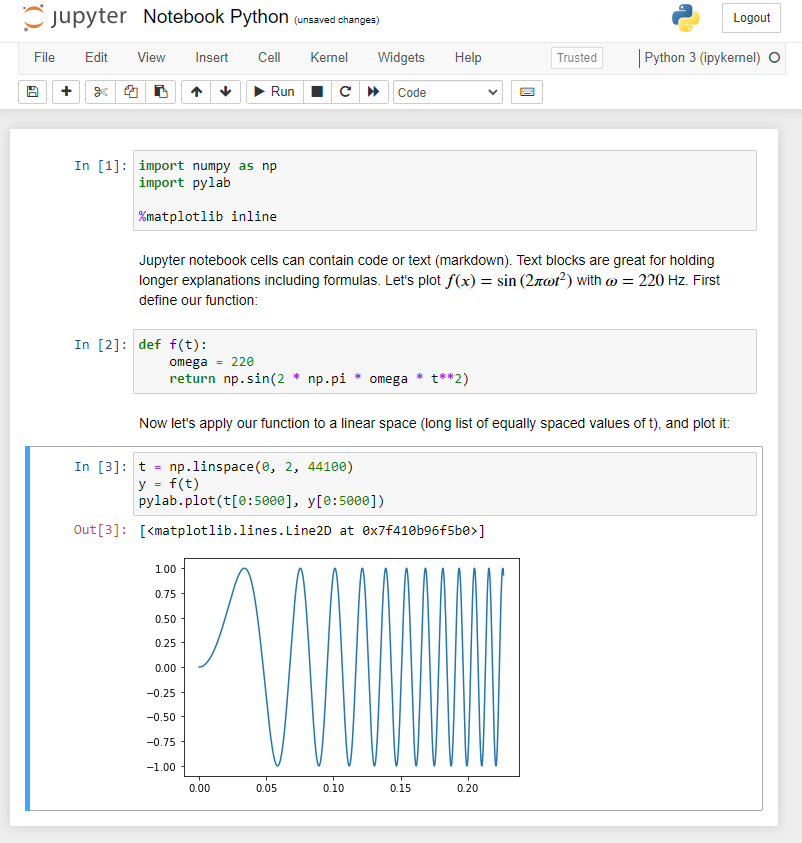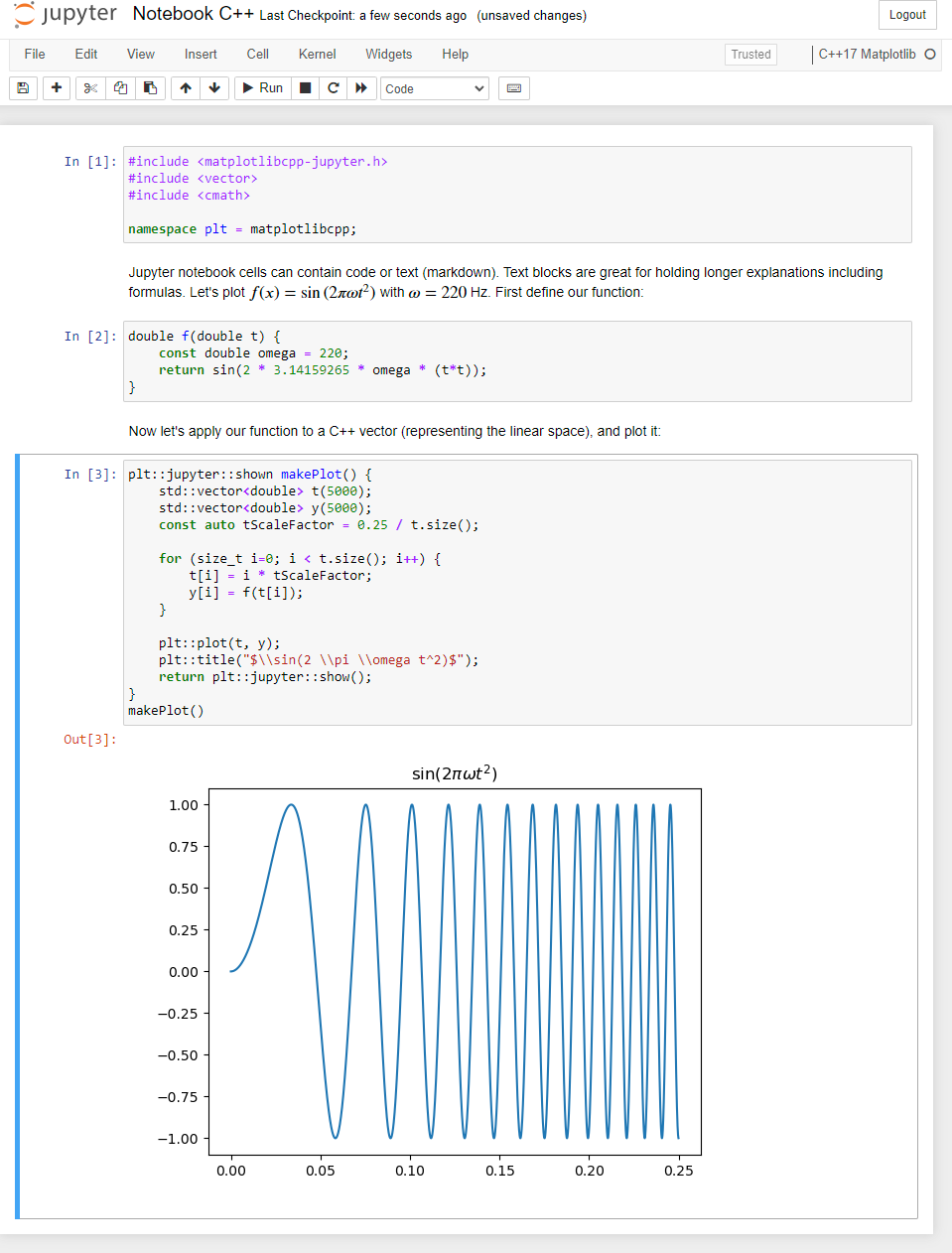Jupyter Notebook is one of my favorite programming environments. It feels like a combination of a REPL (read-eval-print loop) and a scientific notebook. It rewards literate programming: you invite the user to step through the important logic of your program with you, rather than hiding it behind a curtain. They see the intermediate outputs, and are encouraged to experiment and tweak. It’s great for learning and teaching. Here’s what a notebook looks like:
Jupyter is great for dynamic languages with REPL loops, like Python and R. It’s also great for programs that do data analysis, mathematical modelling, plotting and other data science-y things, like Python and R. It used to be called IPython, because it worked just for Python. Sensing a language theme here?
It turns out you can use Jupyter Notebook with more than just Python and R. I wanted to use it with C++ and found that the xeus-cling kernel worked, with a little bit of poking. In Jupyter-speak, the kernel is the binding to a particular language (and in this case, a C++ REPL called Cling that is based on Clang and LLVM). This got me line-by-line C++ support in Jupyter.
But one of the best parts about Jupyter is graphics. Jupyter makes it easy to plot results, rather than just printing off numbers. There are a few popular plotting libraries for Jupyter when you’re using Python or R, but I didn’t find any great ones for C++. So I found a way to use my favorite Python plotting library (matplotlib) from C++, in Jupyter. This is based on some C/C++ to python bindings called matplotlib-cpp.
When combined, you can code in C++ but plot as good as everyone using matplotlib and python.
Here’s the above example rewritten in C++:
In practice, I don’t think you’d use C++ for examples this simple. Numpy (and the other python math and data science libraries) are very convenient and efficient. However, if there’s a good reason to write your program/library in C++, now you can have a notebook interface to it, as well.
You can check it out here, and you can run a pre-built docker container:
1
docker run --rm -it -v ${PWD}/notebooks:/notebooks -p 8889:8889 andrewjjenkins/matplotlibcpp-jupyter:latest

